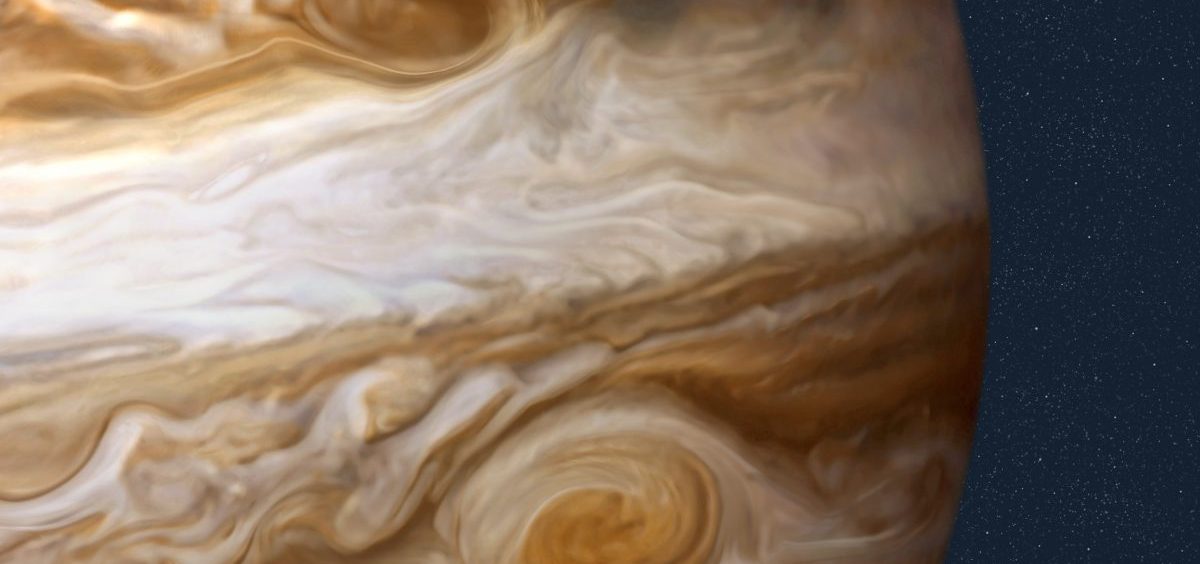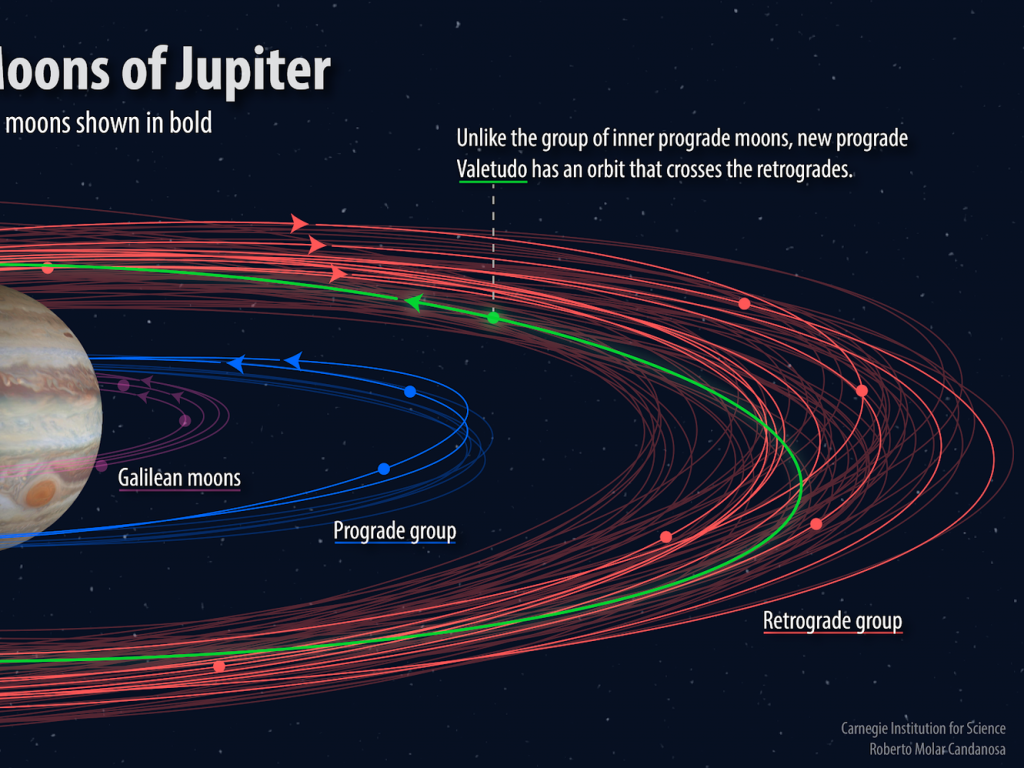News

Galileo Would Be Stunned: Jupiter Now Has 79 Moons
By: Joe Palca | NPR
Posted on:
More than 400 years after Galileo Galilei discovered the first of Jupiter’s moons, astronomers have found a dozen more — including one they’ve dubbed “oddball” — orbiting the planet. That brings the total number of Jovian moons to 79.
The team of astronomers originally wasn’t even looking for the 12 new moons. Scott Sheppard of the Carnegie Institution for Science says he and his colleagues had been trying to track down a giant planet they think may be lurking at the outer reaches of our solar system.
As part of that search, Sheppard was using the 4-meter Víctor Blanco Telescope in Chile in March of last year and realized that Jupiter was right near the part of the sky he wanted to search.
“So we could also search for Jupiter moons while looking for things that are well beyond Pluto,” Sheppard says.

They quickly hit the jackpot — 12 new moons appeared in the images. As they reported Tuesday in an online notice from International Astronomical Union, all 12 have now been confirmed by other telescopes.
Nine of them are in previously discovered clusters of moons that are in what astronomers call a retrograde orbit. “They’re going around the planet in the opposite direction that Jupiter rotates,” Sheppard says.
Astronomers think retrograde moons have a different origin story from prograde moons, which travel in the same direction that their planet rotates.
Sheppard says Jupiter’s prograde moons probably formed from the same spinning disk of stuff that eventually coalesced to form the planet. By contrast, retrograde moons were probably objects that once were wandering around the solar system and got snared by Jupiter’s gravity.
“They didn’t form with Jupiter,” he says. “We think Jupiter captured them as these objects got too close to Jupiter in the past.”
Most of the prograde moons orbit much closer to the planet than the retrograde moons do. But the moon Sheppard and his colleagues call “oddball” is different — instead of orbiting with the other prograde moons, its orbit takes it out as far as the retrograde moons.
The oddball is also the smallest of the moons that Sheppard and his colleagues found, just 1 kilometer across. Sheppard thinks it may be all that’s left of a larger moon that crashed into one or more of the retrograde moons sometime in the past.
Sheppard and his colleagues have proposed naming the oddball moon Valetudo, after a minor goddess and great-granddaughter of the Roman god Jupiter. Even though a dozen new moons is a pretty good haul, Sheppard expects that more searching will turn up even more moons. Maybe 100 or more of the really small ones.
And that raises a question: Does an object less than a mile across deserve to be called a moon?
Sheppard agrees it’s problematic. “Maybe there will have to be a new definition for the smaller moons. Maybe a dwarf moon for anything that’s 1 kilometer in size or smaller,” he says.
Mini-moon, perhaps?
9(MDI4ODU1ODA1MDE0ODA3MTMyMDY2MTJiNQ000))

